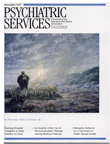Relationship of Cocaine and Other Substance Dependence to Well-Being of High-Risk Psychiatric Patients
Abstract
OBJECTIVE: The co-occurrence of substance dependence disorders was determined in a sample of 160 frequently hospitalized adults with severe mental illness, and the relationship between substance dependence and psychosocial functioning and well-being was examined. METHODS: A structured interview was used to assess subjects for co-occurring current DSM-III-R substance dependence disorders during an acute psychiatric hospitalization. They were administered a structed interview that included the subscales of the Addiction Severity Index, the Center for Epidemiological Studies—Depression Scale, Lehman's Quality of Life Interview, Rosenberg's Self-Esteem Scale, the Mastery Scale, and questions about service needs. RESULTS: Seventy-eight of the subjects (48.8 percent) were diagnosed as having at least one current substance dependence disorder. Most subjects with comorbid substance dependence were polysubstance dependent (55.1 percent), and almost half (44.9 percent) met criteria for cocaine dependence. Subjects who were substance dependent were significantly overrepresented among those diagnosed with bipolar disorder, psychotic disorder not otherwise specified, and major depression. When the analysis controlled for demographic characteristics and primary diagnosis, comorbidity was related to depressive symptoms, adverse life conditions, and diminished life satisfaction in several domains. Substance-dependent subjects were significantly more likely to have been arrested and jailed than nondependent subjects. Cocaine-dependent subjects were significantly less satisfied than all other subjects with their living situation and personal safety and more likely to request assistance for their drug and alcohol use problems. CONCLUSIONS: The findings corroborate high rates of co-occurring substance dependence disorders among frequently hospitalized patients with severe mental illness. They also reveal a high prevalence of cocaine dependence and a dramatic pattern of negative correlates of cocaine dependence. The findings suggest that successful interventions for substance dependence may improve these patients' life circumstances and that psychiatric patients may be particularly receptive to such interventions during hospitalization.



